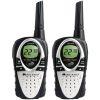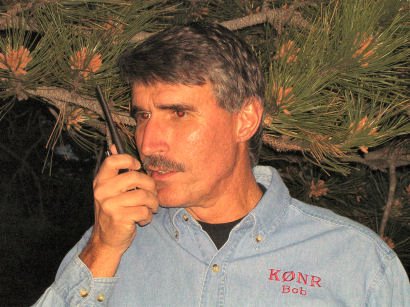More on FRS radios for emergency use
 Hartford, CT (PRWEB) May 3, 2006 -- The Midland Radio Corporation, REACT International, the DC Emergency Radio Network, and NationalSOS.com have jointly announced their support for the National SOS Radio Network -- www.NationalSOS.com -- a free communications network based on the estimated 100 million FRS-compatible radios already in the hands of the public... and growing by up to 12 million radios per year.
Hartford, CT (PRWEB) May 3, 2006 -- The Midland Radio Corporation, REACT International, the DC Emergency Radio Network, and NationalSOS.com have jointly announced their support for the National SOS Radio Network -- www.NationalSOS.com -- a free communications network based on the estimated 100 million FRS-compatible radios already in the hands of the public... and growing by up to 12 million radios per year.This idea first surfaced after hurricane Katrina. I wrote about it in October 2005, but I haven't heard much additional news until I noticed this press release. Having REACT and Midland supporting this idea will certainly help, but it is still not clear where this will head, if anywhere.
73, Bob K0NR



3 Comments:
The Personal Radio Association (PRA) has expressed strong opposition to the National SOS Radio Network (use of FRS radios for emergency communications). See this web site for their position: http://www.popularwireless.com/pra/opinion.html
And here is an article from Mobile Radio Technology (MRT) magazine: http://mrtmag.com/mag/radio_national_sos_gains/index.html
Here's some more on FRS radios for emcomm. I stumbled across an organization called EMCOM.
http://www.emcomus.org
They see FRS as a communications tool for during emergencies. There is a very optimistic channel plan listed on the web site:
http://emcomus.org/commwp.html
A "channel plan" is developed to limit the amount of communications for each purpose, based on using 3-4 channels, thus leaving (or coordinating) channels for use by adjacent neighborhoods for their own communications.
* Channel 2 - Emergency messages to be relayed to the neighborhood coordinator, or designated communications coordinators (there should always be a backup communicator designated in case the primary assignee is incapacitated.
* Channel 8 - Intra/Inter Family Communications
* Channel 9 - Neighborhood light search and rescue efforts
* Channel 10 - Evacuation/Relief/Health/Welfare efforts
* Channel 5 - Secondary Emergency Message Channel - Assigned to one side of the neighborhood that is close to another neighborhood using Channel 5 as their primary Emergency channel. This should only be used when one cannot reach their primary neighborhood coordinator(s).
* Channel 6 - Secondary Emergency Message Channel - Assigned to the other side of the neighborhood that is close to another neighborhood using Channel 6 as their primary Emergency channel. This should only be used when one cannot reach their primary neighborhood coordinator(s).
This is where I have to say "enough". For such a channel plan to be successful, it requires a high level of discipline by all radio users. This is a challenge for a licensed service but is a joke for an unlicensed service such as FRS.
In retrospect, it is clear to me that the FCC missed an opportunity to make something really powerful out of FRS / GMRS. Instead, they just shoved the FRS frequencies between and on top of the GMRS frequencies, hoping for the best. Another example of crappy spectrum planning.
Post a Comment
Links to this post:
Create a Link
<< Home